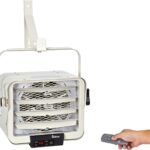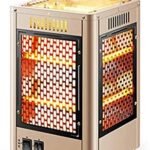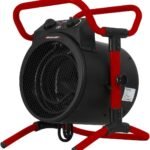You’re exploring the possibility of installing a tankless water heater all by yourself, aren’t you? Keeping your dwelling cozy and comfortable, slashing your utility bills, and stepping into the eco-friendly zone of endless on-demand hot water—a tankless water heater seems to be the perfect solution. However, understanding and tackling the installation process might seem daunting. Don’t worry! This article beams a guiding light on every intricate detail you need to cross this hurdle with an explorer’s confidence! It arms you with adequate knowledge to either execute a self-installation, or, assists you in making an informed decision if the task seems too technical for your liking.
Understanding Tankless Water Heaters
What is a tankless water heater
A tankless water heater, as the name suggests, is a type of water heater that doesn’t require a storage tank. Instead, it heats water directly as it flows through the unit. This kind of system is also often referred to as an ‘on-demand’ water heater because it provides warm water precisely when you need it.
How does a tankless water heater work
Tankless water heaters work by heating water directly without the use of a storage tank. When a hot water tap is turned on, cold water travels through a pipe into the unit. Either a gas burner or an electric element heats the water. As a result, tankless water heaters deliver a constant supply of hot water. There’s no need to wait for a storage tank to fill up with enough hot water.
Benefits of a tankless water heater
Tankless water heaters have a significant number of benefits. Firstly, they are more energy-efficient because they only heat water when it’s needed, reducing power usage. Secondly, because they don’t require a storage tank, they take up less space in your home. They also lower the risk of water damage due to tank leaks. Lastly, they often have a longer lifespan than conventional water heaters, making them a good long-term investment.
Feasibility of DIY Installation
Skills needed for DIY installation
If you’re considering a DIY installation of a tankless water heater, it’s important to have some basic skills and understanding. You should be comfortable with basic plumbing and electrical work. While the actual steps of the installation process aren’t overly complicated, they do involve working with gas lines or high-voltage electricity, which can be dangerous if not handled correctly.
Possible risks of DIY installation
While DIY installation can save you money, it also comes with risks. Without professional training, you may improperly install the unit, resulting in lower efficiency or, in some cases, a dangerous situation. This could lead to leaks, electrical problems, or even a carbon monoxide threat in the case of gas heaters.
When to consider professional installation
If you have limited experience with plumbing and electrical work, or if you don’t feel confident handling gas lines or high-voltage power, it’s best to consider professional installation. Professionals have the necessary skills and experience to ensure the heater is installed safely and efficiently. They will also be able to test the system once it’s installed correctly to ensure everything is working correctly.
Tools and Materials Required
List of necessary tools
The tools required for installing a tankless water heater can vary depending on the model and type of heater (gas or electric), but generally, you may need the following: adjustable wrenches, screwdrivers, a pipe cutter, pipe wrenches, soldering supplies, a level, drill, and drill bits.
Understanding the required materials
Besides the tools, you’ll also need various materials such as copper pipes and fittings, gas flex lines (for gas heaters), screws and anchors, teflon tape, solder, flux, and sandpaper. Again, the specific materials needed will depend on the type and model of your water heater.
Where to buy tools and materials
You can purchase the necessary tools and materials from a home improvement or hardware store. Many of these items may also be available online for your convenience. Before making any purchases, however, make sure to check the installation instructions for your specific heater model as it may require particular tools or materials.
Understanding the Installation Process
Preparation steps
Before you begin installing your tankless water heater, it’s essential to prepare. Ensure you have all of the necessary tools and materials, read through the user’s manual thoroughly, and make sure to turn off both water and power supply to the area.
Stages of the installation process
Although the installation process will vary depending on the type and model of your water heater, it typically involves several key steps. These include mounting the tankless unit on the wall, connecting it to the gas or electric supply, installing the exhaust vent (for gas models), and connecting the water lines.
What to avoid during installation
During the installation process, avoid any shortcuts or improvisations. Follow the manufacturer’s instructions precisely. Avoid mounting the unit in difficult-to-access areas, as it may complicate the installation process and future maintenance.
Safety Precautions During Installation
Personal protective equipment requirements
Safety should always be your highest priority during the installation process. Some key protective equipment you should consider includes safety glasses, work gloves, and potentially a respirator mask if you’re soldering pipes.
Handling electrical connections
When dealing with electrical connections, its must to turn off the power supply before you begin. Remember that working with electricity can always be dangerous. If you have any doubt about your abilities, hire a professional.
Dealing with gas connections
Working with gas connections is also delicate and can be dangerous if done incorrectly. Make sure you know what you’re doing, and shut off the gas supply during the installation. Ensure to check for leaks once the unit is connected using a soapy water solution.
Dealing with Plumbing
How to manage water supply connection
When connecting the water supply, ensure your pipe connections are secure to avoid any leakage. You may need to install isolation valves for easier maintenance in the future. Remember to install the heat trap fittings if these are supplied with your unit.
Ensuring proper drainage
For the tankless water heaters that have a built-in condensate neutralizer, it is essential to ensure that the neutralizer is filled and the heater is properly drained. Failure to do so could result in the heater malfunctioning.
Dealing with potential issues
Potential plumbing issues you might encounter include leaks and inadequate water pressure. If you encounter these or any other problems, it might be best to call in a professional plumber to ensure everything is installed correctly.
Managing Gas or Electric Connections
Understanding the difference between gas and electric heaters
The main difference between gas and electric tankless water heaters is the energy source used to heat the water. It’s important before starting your project to understand whether your home is set up for a gas or electric heater.
Safety precautions for gas heaters
For gas heaters, ensure the gas line and vent are both properly installed and secure. After installation, use a soap and water solution to check for gas leaks. Make sure also to install the heater in a well-ventilated area.
Safety precautions for electric heaters
When installing an electric heater, make sure the heater is appropriately grounded and that you’ve shut off the power before beginning the installation. Avoid contact with water when working with electricity to prevent electrocution.
Post-installation Checks and Tests
Ensuring correct installation
Once your water heater is installed, double-check all connections for leaks using a soap and water solution. Verify that it was installed following the manufacturer’s instructions and code requirements.
Initial operation checks
When you first operate your new water heater, pay attention to how it turns on and heats water. If it doesn’t seem to be working correctly, shut it off and inspect your connections. Look for error codes or lights on the display that could indicate a problem.
What to do if something doesn’t work
If your new heater isn’t working, don’t panic. Consult the troubleshooting section of your user’s manual. If you can’t resolve the issue yourself, don’t hesitate to call in a professional.
Maintenance of a Tankless Water Heater
Routine maintenance practices
Routine maintenance of your tankless water heater can prolong its lifespan and ensure it operates efficiently. This involves regular checks for leaks or other issues, periodic flushing to prevent scale buildup, and checking the filter and removing any debris.
Identifying potential issues
Signs of potential issues with your tankless water heater include fluctuations in water temperature, a decrease in water flow, or the occurrence of error codes on the unit’s display. Catching these signs early can help reduce the need for significant repairs later on.
When to seek professional help
While regular maintenance can keep your tankless water heater running smoothly, it’s a good idea to have it professionally serviced occasionally. If the heater stops working suddenly or if you notice any significant changes in its performance, it’s time to call in a professional.
Pros and Cons of DIY Installation
Cost savings of DIY installation
One of the main pros of DIY installation is cost savings. When you install a tankless water heater yourself, you can save on costly professional installation fees, which can be especially beneficial if you’re working with a tight budget.
Satisfaction of self-installation
There’s also a certain sense of satisfaction that comes from installing a tankless water heater yourself. Knowing that you’ve personally contributed to improving your home can be a great boost to your confidence.
Potential downsides to DIY installation
Despite the benefits, there are some potential downsides to a DIY installation. These include the risk of improper installation, the time and effort required, and the possibility of injury due to accidents. It’s crucial to weigh the pros and cons before undertaking a DIY tankless water heater installation project.









